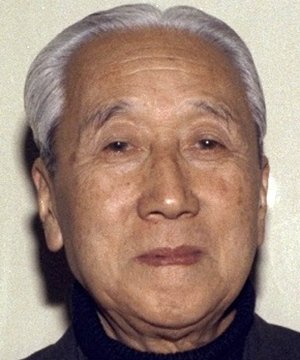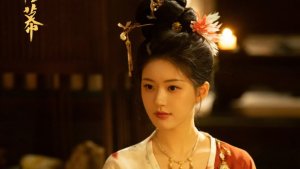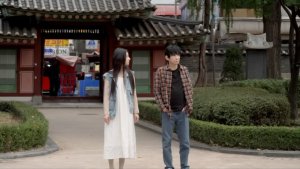Gosho Heinosuke
- Name: Gosho Heinosuke
- Native name: 五所平之助
- Also Known as: Momozono Kyota, Goshotei, ごしょ へいのすけ, 桃園狂太, 五所亭, 五所平右衛門
- Nationality: Japanese
- Gender: Male
- Born: January 24, 1902
- Died: May 1, 1981
He was born as the illegitimate child of his father, Heisuke, who ran a large dry goods wholesaler called "Buzenyoya" in Nabecho, Kanda, Tokyo, Japan. His biological mother was a geisha in Shin-Tomi-cho. When he was five years old, his eldest brother passed away, and he was then chosen as the successor, separating from his mother's care. In 1916, he entered Keio Commercial School. During his student days, he was deeply involved in haiku poetry.
In 1921, he volunteered to enlist in the 1st Infantry Regiment and became a probationary officer in the reserves. In 1923, after graduating from Keio Commercial School, he joined the Shochiku Kamata Studio.
After working as an assistant director for Shimazu, he made his directorial debut in 1925 with "Nanajima no Haru," which he also wrote the screenplay for. Around this time, he re-enlisted in the military as a second lieutenant but was placed in the reserves. Upon returning to Shochiku, he continued to release works that depicted the lives of ordinary people with humor and lyricism.
In 1936, he was stricken with pulmonary tuberculosis and took several months off to recuperate, but he returned to work with "Shindo." After the release of "Kokeishi," he had a disagreement with Jyodo Shiro and left Shochiku. In 1942, he transferred to Daiei.
In late March 1945, he received a military draft order. Although he had been called up for exercises several times before, this was the first time he received a red draft notice. He was assigned to the 49th Infantry Regiment, but the next day, he was granted a one-year postponement due to his poor health during the physical examination and was sent home on the same day. He remained there until the end of the war.
After the war, he returned to Shochiku before joining Toho. During this time, the Toho labor dispute erupted. Taking the union's side, Gosho, along with other people, barricaded themselves in the Kinuta studio. However, in 1950, when the wave of the Red Purge ordered by the Supreme Commander for the Allied Powers reached the film industry, Gosho was also listed as an expelled person. The dispute ended the same year, and Gosho left Toho.
In the following year, 1951, Gosho, along with others, formed the independent studio Studio 8 and partnered with Shin Toho.
From 1964 onwards, he served as the chairman of the Directors Guild of Japan for 16 years, succeeding Ozu Yasujiro.
In 1968, he directed the full-scale puppet film "Meiji Haruaki," created with the cooperation of the Takeda Ningyo-za. Some of the artifacts, including a puppet modeled after Gosho, used in this film were donated to the Tokyo National Museum of Modern Art Film Center.
He was also known as a haiku poet and was active under the haiku pen name "Goshotei" (五所亭) as a member of the "Shunto" group. He also served as a supervisor for the Haiku Poets Association.
He began composing haiku in the 8th year of the Taisho era, and during his time at Keio Commercial School in the 10th year of Taisho, he became a member of "Kabidan." Although he suspended composing haiku after the 12th year of Taisho, when the Itou Haiku Society was established in the 9th year of Showa, he joined and diligently composed haiku under the guidance of Kubota Mantaro.
In 1924, when he accompanied the New Year's greetings rounds, he was secretly asked by the cinematographer Obahama Taro, who was the boyfriend of the star actress at the time, To Eiko, to discreetly act as her bodyguard.
He passed away on May 1, 1981, at the age of 79. His grave is located at Sosho-ji Temple in Minato Ward.
(Source: Japanese = Wikipedia || Translation = MyDramaList) Edit Biography
Screenwriter
| Title | Rating |
|---|---|
| Shin Ohatsu Jizo | 0.0 |
Director
| Title | Rating |
|---|---|
| A Woman and the Beancurd Soup | 0.0 |
| An Innocent Witch | 0.0 |
| Aijo no Keifu | 0.0 |
| As the Clouds Scatter | 6.0 |
| Elegy of the North | 6.0 |
| Yellow Crow | 0.0 |
| Takekurabe | 6.0 |
| Ai to Shi no Tanima | 1.0 |
| Entotsu no Mieru Basho | 7.0 |
| Omokage | 7.1 |
| Once More | 6.0 |
| The Young Women of Izu | 5.0 |
| Hanakago no Uta | 6.0 |
| Woman in the Mist | 5.5 |
| Burden of Life | 7.0 |
| Hanamuko no Negoto | 6.0 |
| The Dancing Girl of Izu | 7.3 |
| Hanayome no Negoto | 6.0 |
| The Neighbor's Wife and Mine | 7.3 |
| Aiyoku no Ki | 0.0 |
| A Smiling Life | 0.0 |
| Yoru no Meneko | 0.0 |
Screenwriter & Director
| Title | Rating |
|---|---|
| Aru Yoru Futatabi | 0.0 |
| An Inn at Osaka | 7.0 |
| Dispersed Clouds | 6.0 |
| Shinsetsu | 3.0 |
| A Night of Passion | 0.0 |
Trending Articles
Esther Yu's Love Game in Eastern Fantasy domestically beats Zhao Lu Si's The Story of Pearl Girl
News - Nov 8, 2024
The recently released Chinese dramas are in a tight race for popularity
Moon Embracing the Sun actor Song Jae Rim passes away at 39
News - Nov 12, 2024
Woo Do Hwan chooses exercise over drinking for stress relief — Mr. Plankton
News - Nov 14, 2024
Check out Woo Do Hwan's interview for Mr. Plankton
Byeon Woo Seok's agency to take legal action against malicious commenters
News - Nov 15, 2024
Read the full statement from VARO Entertainment
Zhao Lu Si candidly states Duanwu isn't worth learning from (The Story of Pearl Girl)
News - Nov 11, 2024
Read the excerpts from Zhao Lu Si's interviews
Shen Yue returns to the small screen with Smile Code
News - Nov 5, 2024
The upcoming healing comedy C-drama Smile Code unveils its premiere date
Bai Lu and Wang Xing Yue's upcoming C-drama is more than just a mystery thriller
News - Nov 13, 2024
The two stars have been confirmed to lead a new Chinese mystery drama
Kim Sae Ron is confirmed to return to the movie scene after two years of hiatus
News - Nov 13, 2024
Kim Sae Ron is officially returning to the industry.


















